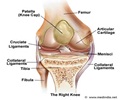Conducting CT scans for emergency department patients who either have had a ground level fall or are victims of simple assault is not necessary.

"The criteria that exist for cervical spine imaging can be vague in certain circumstances and lead to many patients receiving this exam who likely don't need it," said Dr. Nicholson. "At our level 1 trauma center in the past 12 months, there were 5,046 cervical spine CT examinations; in 2003, there were 2,091, an increase of 241%," he said.
"While this study looks at a relatively small subset of the CT exams ordered from the ED, we believe it can have a significant impact on radiation dose reduction at a population level," said Chad Holder, MD, senior author of the study. "These patients frequently have CT scans of the head and/or the face at the same time. The radiation dose to the lenses of the eyes, thyroid and lymph nodes from cervical spine CT is not insignificant; reducing unnecessary radiation exposure to these organs is important," he said. "Additionally, overutilization of high-cost imaging exams has contributed to the increase in healthcare expenditures. Efforts to contain these two aspects should be led by radiologists, who can be a driving force to reduce overutilization," said Dr. Nicholson.
The study will be presented on May 3 at the 2012 American Roentgen Ray Society Annual Meeting in Vancouver, Canada.
Source-Eurekalert










